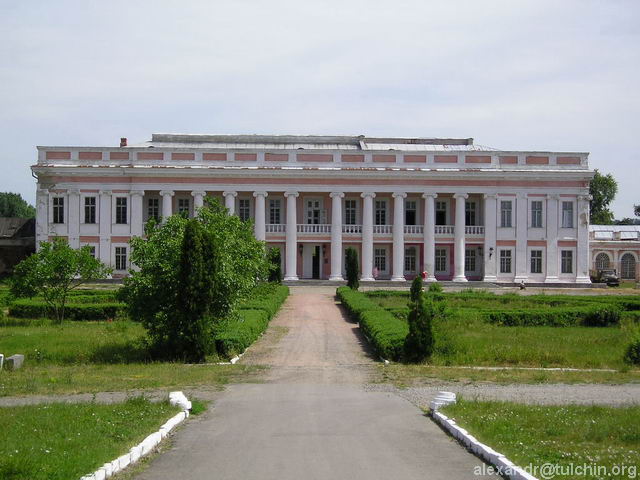|
The city of Tulchin is located in Vinnytsya Province in western Ukraine. The city is the administrative center
of the Tulchynsky District. Tulchin was founded in the sixteenth century and was initially part of the Duchy of
Lithuania. It was incorporated into the Polish-Lithuanian Commonwealth later in that century.
Tulchin was purchased in 1726 by Stanislaw Potocki, a Polish nobleman, who passed the property to his heirs.
In their hands the town of Tulchin became a major regional trading center. Felix Potocki built the impressive
Potocki Palace that survives to this day and is a major visitor attraction. The Palace is surrounded by an extensive
and once magnificent gardens bounded by the Selnets River, a southern tributary of the Bug River.

The first mention of Jews living in Tulchin is made in reference to the Chmielnicki uprisings in 1648, which resulted in
the murder of three-quarters of the two-thousand Tulchin Jews. The Jewish population in the late eighteenth century,
one-hundred-seventeen years after the Chmielnicki massacre,
was about four-hundred-fifty-two, near the same level as had survived the massacre. However, by 1897,
the Jewish population of the town had risen to 10,055 people, approximately sixty-two percent of Tulchin's total residents
(other estimates place the Jewish population at 18,000 – 80% of the total population).
The Jewish residents of late nineteenth century Tulchin was a vibrant community with a synagogue and a number of prayer houses,
who contributed to the economic health of the town as shopkeepers and artisans. The
|
Ukrainian pogroms of the post-World War I
period (1918 -1919), resulted in the murder of more than five-hundred Jews.
With the victory of the Soviets over the White Russians (the Tsarist minions), the Jews of the region were forced
into cooperatives, where they practiced their traditional occupations as skilled artisans. Jews worked in Tulchin's sugar refinery, as well.
And they entered the professions as physicians, dentists, teachers, and apothecaries.
At the start of World War II there were more than five-thousand-six-hundred Jews in Tulchin, half of its peak population
of four decades earlier. Twenty-three months after the Germans invaded Poland, on 23 July 1941, Nazi troops entered Tulchin.
Within a few months, Jews were herded into a ghetto where they remained for a short time; soon thereafter most of them were
forced into the Pechera labor camp where close to three-thousand Jews were worked to death. Only a few Jews with needed
skills remained in the ghetto. As time went on, they were joined by Jews from other regions. Liberation found about
one-thousand-three-hundred Jews in the ghetto in 1944.
Tulchin's 1959 Jewish population was about two-thousand-five-hundred souls. The decline of the Soviet Union was followed
by the decline of Tulchin's Jewish population due to emigration. Jeffrey Veidlinger, author of In the Shadow of the Shtetl,
reports that in 2002, when he visited Tulchin, there were two-hundred-sixty-two Jewish residents, many elderly, still living in the town.
(sources: Wikipedia; The Encyclopedia of Jewish Life, vol. 3, p.1340. photo credits: Alexandr Kharkovyy)
|